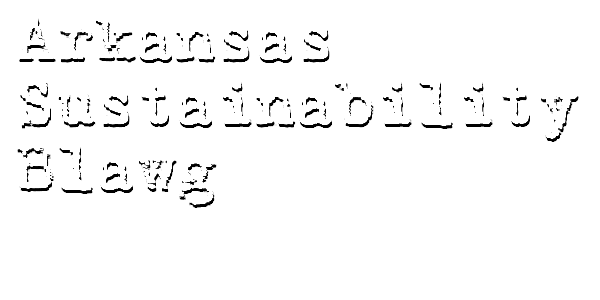 |
| Design concept showing streetside rain garden. |
The Arkansas sustainsphere is fortunate to have a sustainability-minded steward for its capital. Regardless of how you may feel about his politics, Little Rock Mayor Mark Stodola has a vision for a Little Rock that is both green and sustainable. Back in 2010, in pursuit of this vision, Mayor Stodala led a successful campaign for Little Rock to be one of five communities to participate in the 2010 Greening America’s Capitals Program.
The Greening America’s Capitals Program is a collaboration between the EPA, the U.S. Department of Housing and Urban Development (aka, HUD), and the U.S. Department of Transportation. Participants receive technical assistance from the EPA to “develop an implementable vision of distinctive, environmentally friendly neighborhoods that incorporate innovative green building and green infrastructure strategies.”
The report on Little Rock is now out and available to the public. Not surprisingly, the focus of the design efforts and suggestions is the Main Street corridor. The basic design strategies for Main Street are to divide Main Street into four “nodes” – a neighborhood park in the South of Main (“SOMA”) neighborhood; improvements to the 1-630 crossing; a new arts park at the intersection of Main Street and Capital Avenue; and improvements to the “Convention Center Gateway.” Suggested green infrastructure techniques include street-side rain gardens, green roofs, parking areas with permeable pavement, downspouts linked to the rain gardens, as well as new crosswalks, expanding the trolley, improved downtown bike routes, and a shaded sidewalk on the 1-630 overpass.
The authors of the Report correctly observe that all of this will be accomplished, if at all, through in a collaborative framework:
Private property owners and the city could work together to enhance the public realm with café seating and rain gardens between parking lots and sidewalk. City departments, such as Public Works, could begin improvements, such as converting some on-street parking to café seating or rain gardens in order to create inviting spaces.
City staff will need to coordinate necessary utility and street improvements with an overall, long-term vision for the street, which would include permeable parking lanes, rain gardens, and increased café space.
There is nothing the Report that will require a talisman to achieve. The recommendations are straightforward, intuitive, and do not require new construction or ridiculous realignments of infrastructure. They are not particularly expensive. Given the leadership, the resources, and the will, each and every suggestion and recommendation in the Report can be achieved in three years, and probably less.
Of course, it is relatively easy to gather designers, brainstorm ideas, and produce a glossy Report overflowing with pretty pictures and concept drawings. Green roofs, rain gardens, new crosswalks, new bike routes, an expanded trolley line, and permeable pavement would represent a fundamental change in the infrastructure philosophy of downtown Little Rock. This is going to require a focused and intentional marriage of state and local policy and private funding and development.
It will also require a realignment of priorities. For example, many of the suggested improvements – rain gardens and permeable pavement – are relatively inexpensive and could be funded with the proceeds from a tax-increment financing district. But those who already receive piece of the property tax pie tend to have an attitude of entitlement to the proceeds of any property tax increase. As a result past efforts to establish a TIF district for downtown Little Rock have flat-lined on arrival.
Likewise, sidewalk café-seating holds the promise of creating immediate life and vibrancy downtown. But there has been a movement afoot for years to make downtown more accessible to mobile food vendors (in the model of cities like Austin, Texas), and this has been unsuccessful because of local laws that make it illegal for vendors to use both street and sidewalk. To this point, the regulatory and zoning attitude in downtown has been more restrictive and less permissive. Assuming Little Rock wants to be greener, that is absolutely going to need to change.
The Greening America’s Capitals: Little Rock, Arkansas Report can be found here:

